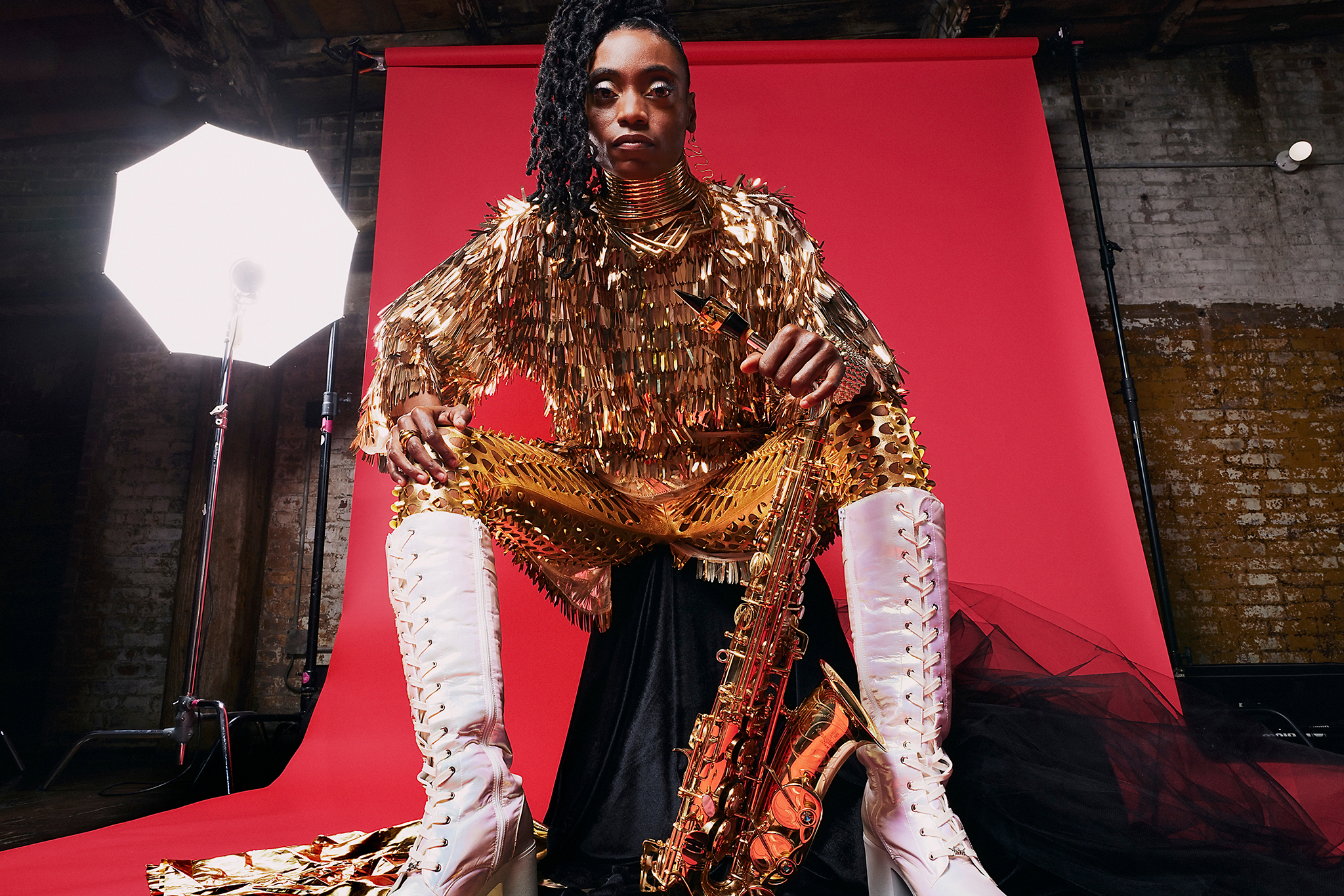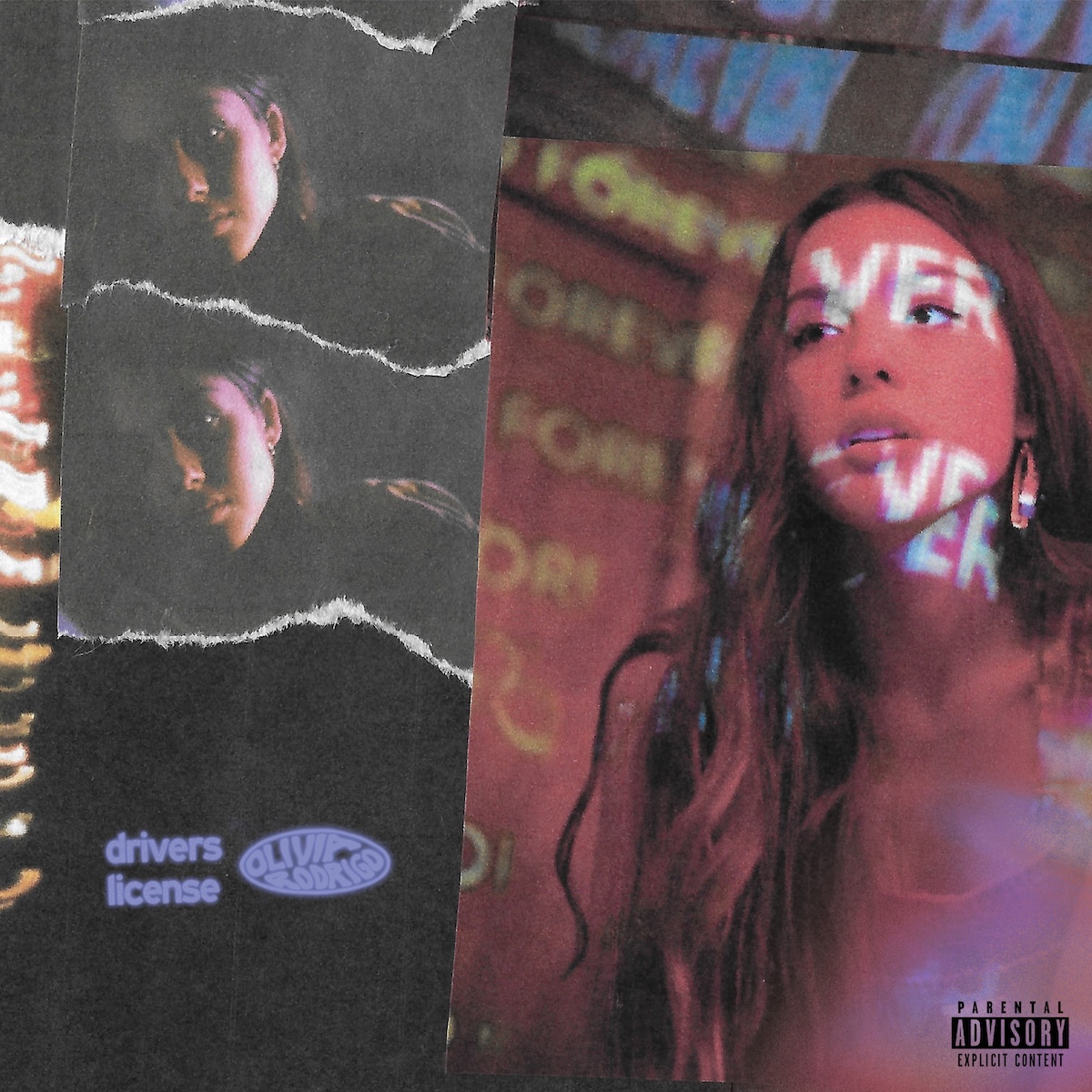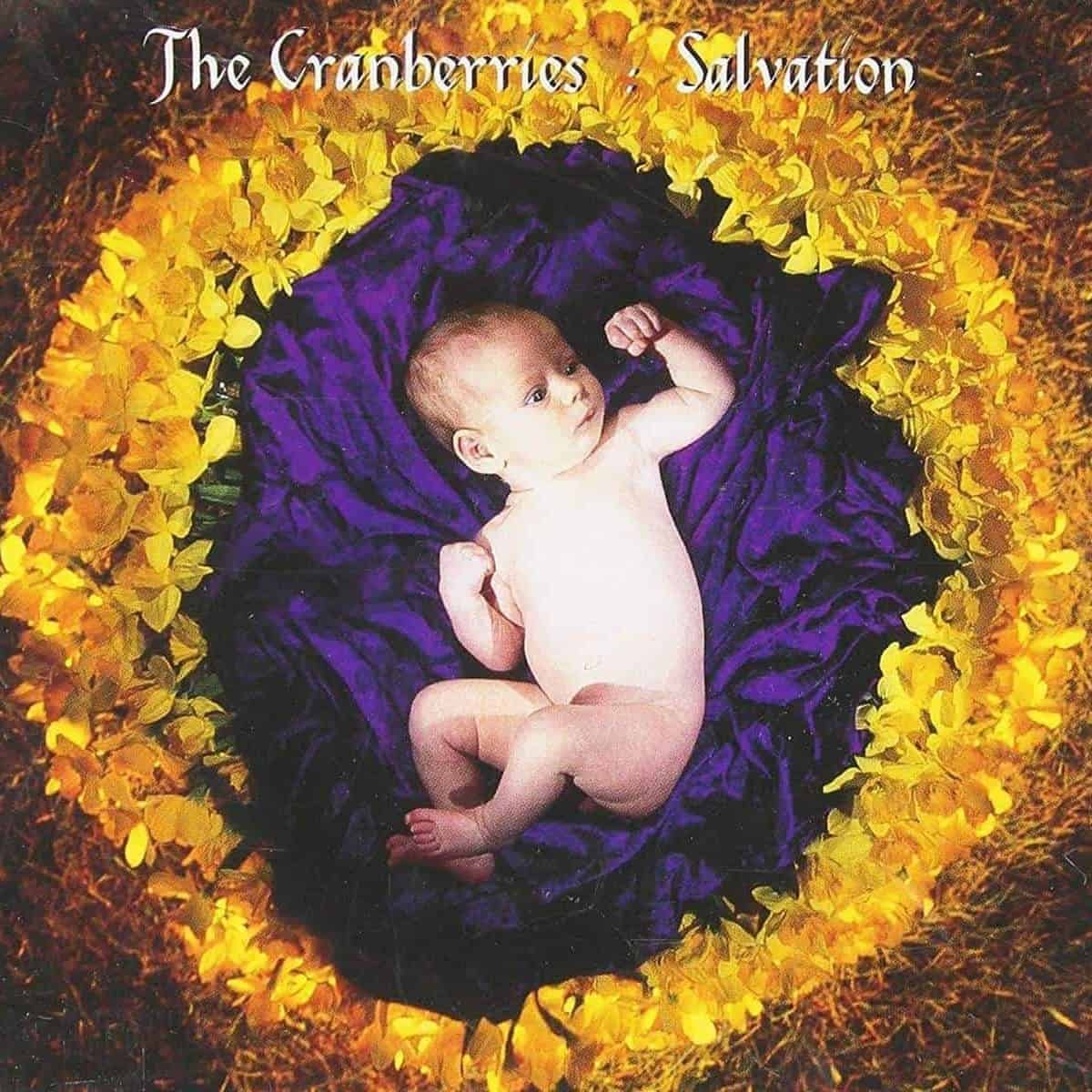I don't know if you've noticed, but alto saxophonist Lakecia Benjamin has been blasting through the jazz world like a comet the last couple of years. She's been around for a while — her debut, Retox, was released in 2012, and her next album, Rise Up, in 2018 — but her third, Pursuance: The Coltranes, was her first truly great record. Its 13 tracks were all written by John and Alice Coltrane, including pieces from throughout both artists' careers like "Syeeda's Song Flute," "Liberia," "Central Park West," "Going Home," and "Turiya And Ramakrishna." The music was performed by a stunning array of guests, from bassists Ron Carter and Reggie Workman (both of whom played with the Coltranes) to harpist Brandee Younger, vocalists Dee Dee Bridgewater and Georgia Anne Muldrow, violinist Regina Carter, trumpeter Keyon Harrold, and more. But Benjamin was always the focus, her sharp and fluid lines cutting through in a way that bridges multiple genres and generations.
Her work includes elements of Latin and Caribbean music, funk, gospel and more in addition to jazz. As for her actual sound on the horn, I hear elements of soulful players like Hank Crawford, and bluesy ones like Bobby Watson, more than I hear the pure bebop of Charlie Parker (or Charles McPherson) or the avant-garde explorations of Ornette Coleman. She's a questing player, and capable of incredible fast runs and piercing high notes, but very grounded at the same time.
"I definitely love Ornette," she told me when we spoke the other week. "And of course, I love Bird. But if I had to sum up my musical saxophone sound and put it together, Hank Crawford is right. Johnny Hodges, in terms of me developing my alto sound and learning how to lead a section. You got to throw in Jackie McLean. You're going to have to throw in Kenny Garrett. I would put maybe Charlie Mariano, some Phil Woods in there for my Mingus love. It's kind of all over the place — I love Maceo Parker, you know, but I'm at this stage trying to find some way to not just take from all the languages I've taken from but to find some kind of authentic sound and expression of myself."
Pursuance should have brought her to new audiences immediately, but luck was not on Benjamin's side. The album was released March 27, 2020, in the teeth of the pandemic, and when she finally began touring in support of it, more than a year later, things got worse. After playing a festival date in Cleveland in September 2021, she was involved in a major car accident, breaking her collarbone, her jaw, and her shoulder blade, and rupturing an eardrum. Any one of these injuries could have derailed her entire career, but less than two weeks later, she was back on stage at the Pittsburgh Jazz Fest, playing with a broken jaw.
Not long after that, she embarked on a month-long European tour, and only when she returned home did she begin the physical therapy necessary to make a full recovery, regaining the full use of her right arm and her jaw. Is it really a surprise that her 2023 album was called Phoenix?
I began my conversation with Benjamin by asking her how she got to where she is now, and her answer had nothing to do with where she went to school or who she apprenticed with. She said simply, "Hard work, unshakable determination, a lot of consistency. Belief in myself. Really trying to keep going, using every failure as a kind of a way to learn and grow and move forward."
Phoenix is a powerful statement of an album. Produced by Terri Lyne Carrington, it pays tribute to a lot of Benjamin's heroes and influences, and features a slew of guests, including many notable women: Angela Davis, poet Sonia Sanchez, Georgia Anne Muldrow, Patrice Rushen, and Dianne Reeves all appear. And near the end of the album, Wayne Shorter is heard delivering a short philosophical disquisition that serves as a kind of motivational speech.
Positivity and a focus on the horizon are apparent the minute you talk to Lakecia Benjamin. She sees it as her responsibility not only to be the best musician she can be, but to model success for younger players and show them a path forward. "It's my responsibility. You know…I came up under Gary Bartz, Wessell Anderson, Bruce Williams, a lot of the cats. And they took me in and helped me, a lot of times free of charge. So it's kind of how this music goes. You know, you work, you work and you're always still trying to get to the next level. But right now there's other, younger people watching me and watching what I do and watching what I accomplish and it's influencing what they think is available to them. So it's definitely my job to go as far as I can go. And, you know, keep hustling and trying, kick down every door on the way in and leave it open for them."
Because of her work ethic, and the quality of her music, it's become clear that the jazz business, in America and internationally, has decided to bet on Lakecia Benjamin. She's done a Tiny Desk Concert and appeared on The Late Show With Stephen Colbert. More than one musician I know has told me, unbidden, that they can see that she's getting industry support, and they don't say it in a hater-ish manner; they say it with admiration, because they've seen her busting her ass and feel that she's being justly rewarded. And she feels it too. "I definitely feel a difference in between those [early] days and now; it does feel that the jazz community has somewhat embraced me more and taken me on. And right now, there's a light on me. You know, there's a big spotlight on me, and it's welcoming and warm and that's all you can hope for. You put in a lot of work, you put in a lot of time, you know, if it's being seen and if people have anything to say, good or bad, I'm happy to be up for conversation."
The first thing you notice about Benjamin's music is that she plays hard. Which makes her something of an outlier in the current jazz moment, when music seems to be getting more and more meditative and even placid. "I just believe there's music for all occasions," she says. "There's music for some people that need to get on a dance floor. There's music for people that are going through grief, there's music for people that need inspiration and all of these things can exist at once. You know, we can all listen to Alice, and because she's so intense and powerful, we can play an intense ballad, or we can play an intense, you know, meditative song, or we can play an intense, really high-energy spiritual song… I just feel that this particular stage that I'm in right now, it's the flamethrower stage."
She laughs, and adds, "I'm very physical when I play. It's almost — not like a sport, but it's a very physical experience for me. It's very engaging. I'm not in a somber mood. I'm really trying to express some kind of urgency to my audience about what I'm feeling, what I'm doing, what we're doing now, how important it is to be joyful, how important it is to be alive and feeling that right now, and the way — just the spirit that I'm in right now, I don't have it in me, you know, for the meditative."
The other thing that's extremely noticeable about Benjamin is her look. Beginning with the cover to Pursuance and continuing on Phoenix and her latest release, Phoenix Reimagined (Live), she has dressed in bright colors — white, red, and gold — and in carefully designed outfits that verge on superhero costumes. Seriously. Cape and all. When I mention it, she laughs, but it's clear that she takes her visual presentation as seriously as every other aspect of her work.
"I used to play with Clark Terry," she says. "He told me, they see you before they hear you. He was very keen on [the idea that] we have to dress up to be the part or whatever, but even Ron Carter, he wouldn't take a picture with me once I got out of my stage clothes." She continues, "I just kind of believe that, yeah, your music defines you and it's [part of your] personality and the audience is getting to know you, but they're getting to know you from the first moment they see you. So each part of your personality that you can visually present, [sonically] present, everything, it's helping them sum up what you're trying to get them to experience. What is your message? What is your purpose? And right now, in the phase that I'm in, I'm really trying to inspire people to keep going. I really feel that sometimes as artists, it's a dark world…so I'm just trying to show that, yeah, it is a long path and it's a lot of hard work, but there's some fun in it and some joy in it. If you can get a chance to do what you love to do and do it on stage in all gold and make some money, it's a good day."
Phoenix Reimagined (Live), out this month, is a live-in-the-studio document of where Benjamin's creative head is at. It includes reworkings of five tracks from Phoenix — "Amerikkan Skin," "Mercy," "New Mornings," "Phoenix," and "Trane" — alongside some new compositions, but it also allows her to play with some of her longtime heroes. The core band features pianist Zaccai Curtis, bassist Elias Bailey, and drummer EJ Strickland, but on "Trane," she's joined by guitarist John Scofield, trumpeter Randy Brecker, and drummer Jeff "Tain" Watts.
"It's a constant question from interviewers — what's next? Even though we have an album coming out tomorrow, they want to know what's next," she says, laughing. "So I was, you know, contemplating, am I ready to move forward with that? Because all of our shows still have the Phoenix music, we''e booked all the way to the end of 2025. People are really embracing Phoenix, so they're not ready to move on. But I'm in a transition. So I was trying to find a way to get back, I guess, to who I am, like what it is that inspires me to come up with ideas to create."
Her recent success, and the doors it had opened, provided an opportunity, and she seized it. "I had met so many musicians during this past year that were just phenomenal, that probably would never have spoken to me before. But now through my new status, they'll pick up my phone call in a heartbeat." The idea was to give new fans, perhaps especially younger listeners who might not have any experience of live jazz, an idea of what a Benjamin show offers. But, as she says, "I also wanted to get some guests, I'm not even sure there's a polite way to say it, that would kick my butt. That would really force me to start growing and moving forward. And focus on what is next, and remind me of all the flaws I have. So that's why I called on those guests."
Lakecia Benjamin looks like a superhero and plays like a flamethrower. She's been tested in multiple ways already, and has come flying through. And her attitude — that life is about learning and improving, and passing on what you've learned to those who come after you — is exactly what jazz needs.
TAKE 10
Nicole McCabe - "Force Of Good"
LA-based alto saxophonist Nicole McCabe's third album as a leader (she's also one-half of the duo Dolphin Hyperspace) features Julius Rodriguez, whose own second album was featured in last month's column, on piano and Fender Rhodes, alongside bassist Logan Kane (the other person in Dolphin Hyperspace) and drummer Tim Angulo. Guitarist Jeff Parker produced the album and plays on one track; trumpeter Aaron Janik and trombonist Jon Hatamiya guest on two other tracks, including this one. "Force Of Good" kicks off with a series of sharp taps from Angulo, before Rodriguez lays down a tight, almost montuno-like piano melody, over which the three horns float in pastoral harmony. McCabe's solo is a thoughtful and well-paced journey; you can almost picture her walking back and forth, brow furrowed, lines occurring to her, emerging, then fading away. A few small moments of squealing catharsis don't break her overall focus. (From Mosaic, out now via Ghost Note.)
Avery Sharpe - "My Friend, Don't Be Afraid To Ask For Help"
Bassist and composer Avery Sharpe studied with Reggie Workman, and played with pianist McCoy Tyner for decades, touring the world and making more than two dozen albums with him. He's also recorded extensively as a leader; I Am My Brothers Keeper is his 15th album, a suite for double quartet (piano, bass, drums and balafon, plus a string quartet). "My Friend, Don't Be Afraid To Ask For Help" kicks the record off, and the first thing you hear is Sharpe absolutely slapping the shit out of the bass's strings, making it sound like a guembri from a Gnawa group. As the video shows, dancer Kabisko Koba was in the studio during the sessions, inspiring the players. Pianist Zaccai Curtis and drummer Yoron Israel are absolutely locked in with Sharpe, the strings provide surging leads, and Tony Vacca plays the balafon — an African xylophone-like instrument with a stark, metallic rattling sound. (From I Am My Neighbors Keeper, out now via JKNM.)
Ivo Perelman/Aruán Ortiz/Ramón López - "Shape 3"
Brazilian tenor saxophonist Ivo Perelman releases music like a fire hose. (Full disclosure: I've put out two of his albums on my label, Burning Ambulance Music, and a third will be coming later this year.) What makes his work so interesting, beyond his absolute mastery of the horn's entire range, is the range of collaborators he chooses to work with. On this album, he's joined by pianist Aruán Ortiz, with whom he duetted on his nine-CD 2021 box set Brass & Ivory Tales, and drummer Ramón López, with whom he first recorded on his 2002 album The Ventriloquist, for a series of totally improvised encounters that have the stability and cohesion of compositions. Perelman's lines are melodic, even romantic, and each of his compatriots seems able to feel where he's going, and even take the lead when necessary. "Shape 3" begins as a piano-drums duet, and maintains a jumpy energy throughout. (From Ephemeral Shapes, out now via Fundacja Słuchaj.)
Tryp Tych Tryo - "Air Water Fire"
Tryp Tych Tryo is a new group that includes Tamar Osborn on flute and baritone sax, Wojtek Mazolewski on electric and acoustic double bass, and Natcyet Wakili on drums. Osborn's instruments are fed through some heavy effects, giving the music an almost psychedelic quality. There are two quite long tracks, "Three Colours Of The Sun" and "Aries Journey Under The Libra Moon," and some pieces which feel purely improvised, like "The Uncertainty Principle" and "Let's Go," which begins with Mazolewski saying those words to kick everything off. The track I'm posting here, though, is probably their most structured piece. "Air Water Fire" begins with a short drum break before a taut beat comes in and Mazolewski begins laying down a thick, hypnotic dub bassline over which Osborn lays down rippling, echoing baritone sax phrases through so much reverb and delay that it sounds like a Bill Laswell dub production. (From Warsaw Conjunction, out now via On The Corner.)
Saccata Quartet -"Hmm"
Saccata Quartet is a unique improvising ensemble consisting of guitarist Nels Cline, bassist Darin Gray, and percussionists Chris Corsano and Glenn Kotche (Cline's bandmate in Wilco). The four tracks on their debut LP bear the titles "Uh Oh," "Hmm," "Umm," and "Oh OK," which may give you some idea of how they were created and what to expect. The first of those is 17 minutes long and takes up the entire first side of the disc; the other three are between four and eight minutes long, and have the feel of a suite. Given time to develop, their music is intriguing, somewhere between Sonic Youth and the Art Ensemble of Chicago. Corsano and Kotche are having a fascinating conversation between themselves, while Cline and Gray are exploring the potential of sound but never allowing any idea to take solid form — instead, we get throbbing single bass notes and sheets of low-volume metallic guitar noise. (From Septendecim, out now via We Jazz.)
Something Else! - "The Chicken" (Feat. Vincent Herring)
I'm currently waiting for a really interesting-looking book to hit my mailbox. Mike Smith's In With The In Crowd: Popular Jazz In 1960s Black America is a history of soul jazz, and artists like Jimmy Smith, Ramsey Lewis, and Eddie Harris who had actual hit records once upon a time, while critical attention was focused on (equally brilliant) avant-garde musicians like John Coltrane, Ornette Coleman and Albert Ayler. Something Else! is a one-off collective led by alto saxophonist Vincent Herring and featuring trumpeter Jeremy Pelt, tenor saxophonist Wayne Escoffery, guitarist Paul Bollenback, pianist David Kikoski, bassist Essiet Essiet, and drummer Otis Brown III. Their album features versions of classic soul jazz tunes by composers like Horace Silver, Eddie Harris, and Stanley Turrentine, among others. "The Chicken," by Pee Wee Ellis, rides an incredible funk groove worthy of Stax Records, with every horn riff and solo coming in hot. (From Soul Jazz, out now via Smoke Sessions.)
Linda Sikhakhane - "Inkehli"
I've been following saxophonist Linda Sikhakhane's career for a while; I interviewed him in 2018, and helped connect him with the Ropeadope label, which put out his last album, 2022's Isambulo. Now he's signed to Blue Note and released Iladi, a beautiful quartet disc featuring pianist (and producer) Nduduzo Makhathini, bassist Zwelakhe-Duma Bell le Pere and drummer Kweku Sumbry. Since the beginning of his career, Sikhakhane has been operating in territory that's obviously inspired by the work of John Coltrane and McCoy Tyner, but also draws from the South African jazz tradition, including the work of pianist Bheki Mseleku and saxophonist Winston "Mankunku" Ngozi. On "Inkehli," le Pere lays down a delicate, almost pinging bass line that reminds me of a mbira, as Sumbry ticks along subtly and Makhathini takes a solo of extraordinary beauty. This is a true collective effort, four men together creating something much greater than themselves. (From Iladi, out now via Blue Note.)
Marwan Allam - "Ajmeya"
Tunisian-born bassist Marwan Allam is joined by saxophonist Yacine Boulares, pianist Chris McCarthy, and drummer Samvel Sarkisyan on his debut album as a leader. It's named for the gate that connects the old and new cities in Tunis, and the music is inspired by the melding and combination of cultures found in North Africa. Rhythms from North African, Turkish, and Spanish music, among others, are combined with American jazz, and the saxophone melodies Allam writes draw from African pentatonic scales and Andalusian maqams. His bass style, meanwhile, shifts between deep swing and a loose, percussive sound imitative of the guembri, an instrument played across North Africa, particularly in Gnawa music. He's yanking at the strings in a very guembri-like style, complete with rattling metal to kick off the album on "Ajmeya," but when Boulares comes in, the melody has a keening quality that reminds me of Wayne Shorter. It's beautiful stuff. (From Bab Bhar, out now via Marwan Allam.)
Nout - "Noutsson"
There's a woman on YouTube who runs a harp through various effects pedals. I bet she'd love Nout. This French trio consists of Delphine Joussen on flute, Rafaëlle Rinaudo on electric harp, and Blanche LaFuente on drums, and their music shifts on a dime between pastoral, minimalist spiritual post-jazz and ultra-distorted electric blowouts that sound like Konono No. 1 jamming with Merzbow. Live Album, as its title implies, was recorded at nine different concerts across Europe between July and December 2023, and it's some of the most stomping, fist-in-the-air music I've heard all year. On the album's final three tracks, the trio are joined by baritone saxophonist Mats Gustafsson, who pushes the energy level even further into the red. "Noussons" is a rip-roaring eruption that sounds like a particularly noisy track by Gustafsson's own group Fire!, with the blatting sax swathed in electronic outbursts and clattering drums. Explosive and awesome. (From Live Album, out now via Gigantonium/Trost.)
Kurt Rosenwinkel - "A Shifting Design"
I have long been ambivalent about the music of Kurt Rosenwinkel. He's an extremely talented guitarist, but his playing often strikes me as more showy than emotional, and not in such a ludicrous way that it makes me grin, like Al Di Meola or Yngwie Malmsteen. He rarely makes me feel anything, in fact, except a sharp sense of annoyance when he steps on this one particular pedal he has that makes his guitar sound like an electrified slide whistle. He doesn't use that pedal on this record, which is probably why it's immediately become one of my favorite things I've ever heard from him, and an album I can recommend without reservation. Rosenwinkel's 2001 studio album The Next Step, released on Verve, is regarded in some circles as a key document of modern jazz, laying down compositional and stylistic principles that an entire generation of artists would emulate, if not outright steal. As its title implies, The Next Step Band Live At Smalls 1996 documents the exact same group heard on the studio album — tenor saxophonist Mark Turner, bassist Ben Street, and drummer Jeff Ballard — working through much of the same material four years before they'd get to track it. In fact, they play five of the eight tracks from the album on this gig: the title piece, "Use Of Light," "Minor Blues," "A Life Unfolds," and "Zhivago," with Brad Mehldau guesting on piano on the latter. It's the sound of the entire band that makes this live set work as well as it does. This isn't a bootleg; it's extraordinarily well recorded, and makes me wonder if they had plans to release it way back when and just didn't, for some reason. Street and Ballard are a fantastic rhythm team, grooving hard on the uptempo numbers and swinging subtly on the ballads, and Mark Turner, even this far back, was an absolute wizard. The album begins with the version of "A Shifting Design" streaming here. It's introduced by several minutes of solo guitar, but when the band comes in, it really comes to life. Turner's long, questing lines are quick but superbly coherent — like Joe Henderson, you can never hear him thinking, the music just appears — and he ducks and dives in and out of the melody so smoothly you don't even notice it happening until it's over. Rosenwinkel shadows him, offering commentary that's both relevant and interesting on its own. And look, I'll give it to Rosenwinkel; he does some stuff at the beginning of "Use Of Light" that's beautiful in a way that's got more to do with Sonic Youth ballads like "Shadow Of A Doubt" than with "jazz guitar" as it's commonly understood. This is a really great record, one I think I'm going to be coming back to a lot. (From The Next Step Band Live At Smalls 1996, out now via Heartcore.)
OUTWARD BOUND
@democrats Vice President Harris stopping by HR Records in DC to celebrate Small Business Week. #dnc #thedemocrats #kamalaharris
♬ original sound - Democrats






